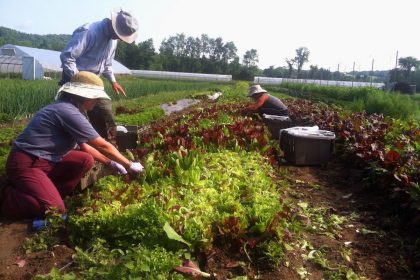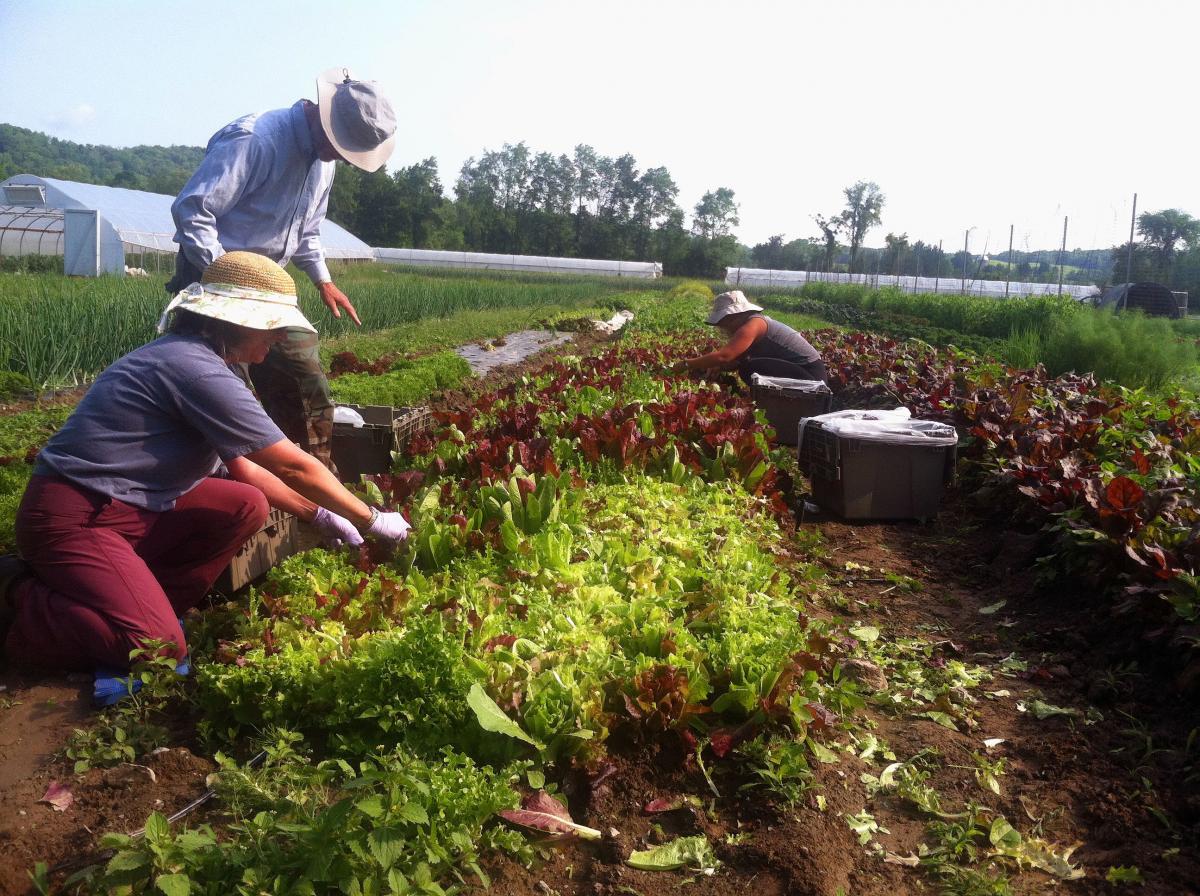
Food Security section of the Farm to Plate Strategic Plan is updated to articulate strategies to improve food access, increase local food availability, and advocate for the needs of food insecure Vermonters
 Montpelier, VT –One in eight Vermonters struggle with hunger and 13.2% of Vermont households are food insecure, having difficulty during some time of the year to provide food for their family due to a lack of resources. September is Hunger Action Month, when the national Feeding America network of food banks call on Americans to take action to fight hunger in their community.
Montpelier, VT –One in eight Vermonters struggle with hunger and 13.2% of Vermont households are food insecure, having difficulty during some time of the year to provide food for their family due to a lack of resources. September is Hunger Action Month, when the national Feeding America network of food banks call on Americans to take action to fight hunger in their community.
One of the goals of Vermont’s statewide Farm to Plate food system plan is to ensure all Vermonters have access to fresh, nutritionally balanced food that they can afford.
The updated Food Security section of the Farm to Plate Strategic Plan reviews food security trends and challenges in Vermont and New England. An in-depth analysis identifies opportunities for federal food programs, community food security programs, and Vermont’s charitable food system to improve the health and well-being of food insecure Vermonters. The section explores how food access programs can address food security while considering how Vermonters access food; the extent to which food is available; how food is prepared, cooked, and stored; and the stability of Vermont’s food system.
“Food access challenges in Vermont are all too real for too many families and the revised Food Security section sheds light both on the extent of the problem and provides specific recommendations about what more could be done to address the issue,” states Rachel Schattman, co-author of the updated Food Security section and former local food program coordinator at UVM Extension Center for Sustainable Agriculture/PhD candidate, UVM Dept. of Plant and Soil Science.
Originally released in 2011, the updated section was prepared by Schattman and UVM Extension Center for Sustainable Agriculture colleagues, Virginia Nickerson and Linda Berlin (also co-chair of the Farm to Plate Food Access Cross-cutting Team). Both the Food Access Cross-cutting Team and Scott Sawyer at the Vermont Sustainable Jobs Fund served as editors of the updated Food Security section.
People who work in Vermont’s charitable food system and community based food programs and organizations, Vermont Agency of Agriculture, Vermont Agency of Health and Human Services (including Vermont Dept. of Health and Vermont Dept. of Children and Families), members of the Farm to Plate Food Access Cross-cutting Team and entire Farm to Plate Network can all utilize this revised section as they work to address food security challenges in Vermont.
“The Vermont Foodbank works with a wide range of partners and farms to provide 10 million pounds of food to 153,000 Vermonters in need of assistance every year. Food insecurity affects children, seniors, people with disabilities, and working families who earn less than a livable wage despite full time work. We rescue a lot of edible and nutritious food from grocery stores as well as farms during the harvest season. The goals and strategies being advanced by the Farm to Plate Network are helping to ensure that the bounty of Vermont’s growing food system reaches all Vermonters and we value being a member of the Network.” shares Chris Meehan, chief community impact officer at the Vermont Foodbank and member of the Food Access Cross-cutting Team.
The updated Food Security Section is available online in Chapter 4: Cross-cutting Issues of the Farm to Plate Strategic Plan.
Vermont Farm to Plate is the statewide initiative legislatively directed to increase economic development and jobs in Vermont’s farm and food sector and improve access to healthy local food for all Vermonters. Vermont’s ten year Farm to Plate food system plan to strengthen the working landscape, build the resilience of farms and food enterprises, improve environmental quality, and increase healthy, local food access for all Vermonters is being implemented by the Farm to Plate Network—over 350 farm and food sector organizations from across the state. Farm to Plate is coordinated by the Vermont Sustainable Jobs Fund, a non-profit organization based in Montpelier, Vermont. Learn more at www.VTFarmtoPlate.com.
This post originally appeared on Farm To Plate’s News and Announcements.
PHOTO: RAFFL volunteers glean lettuce mix from Dutchess Farm in Castleton – RAFFL’s longest standing gleaning partner. Credit: RAFFL (Rutland Area Farm and Food Link)




